
Изюм – высушенные плоды винограда – самый распространенный вид сухофруктов в нашей стране. При внешней простоте его изготовления технология производства высококачественного изюма в действительности достаточно сложна и требует неукоснительного соблюдения ряда условий.
Прежде всего, хороший изюм можно получить только из сортов винограда с тонкой кожицей и мясистой мякотью, а содержание сахара должно быть не менее 20% (к слову, в уже готовом изюме доля сахара доходит до 80%). Достичь таких характеристик ягод винограда возможно только в жарком солнечном климате, поэтому одним из мировых лидеров в производстве данного сухофрукта является Таджикистан, где технологии правильной сушки и дальнейшей обработки изюма доведены до совершенства. В Таджикистане изюм обрабатывают особым способом, при котором сохраняется 80% природных сахаров. Стоит отметить, что в сушеных плодах содержится большее количество полезных веществ, чем в натуральном винограде.
Изюм – уникальный продукт, потому что он максимально сохраняет полезные свойства свежего винограда – 70-80% витаминов и 100% микроэлементов. Считается, что чем темнее изюм, тем он полезнее. Светло-коричневый изюм из Таджикистана – настоящая находка для пищевой индустрии. Кроме того, что он идеален в самостоятельном виде (как перекус или даже десерт), изюм прекрасно дополняет и обогащает вкус любых кондитерских изделий (конфеты, батончики, шоколад), продуктов быстрого приготовления (снеки, мюсли, кранчи), напитков, молочных продуктов (йогурты, пудинги, мороженое, кисломолочные напитки), мясных блюд.
Несмотря на небольшие размеры, изюм имеет высокую энергетическую ценность и содержит важные для здоровья витамины, минералы и клетчатку. Многочисленные исследования подтверждают пользу изюма для нашего организма. Его регулярное употребление позволяет укрепить сердце и сосуды, улучшить спортивные показатели и замедлить старение. Благодаря большому содержанию витаминов группы В, изюм ценится своей способностью укреплять нервную систему, улучшать сон. Его можно применять, как успокоительное средство, снимающее напряжение и усталость.




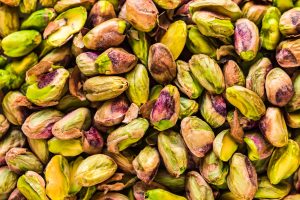
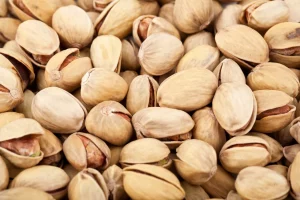
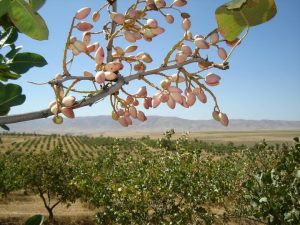
Во многих странах мира ежегодно 26 февраля отмечают День фисташек. В Таджикистане фисташки одно из любимых лакомств. Сезон сбора фисташек обычно начинается с 20 июля и продолжается до середины августа.
Человечество употребляет фисташки уже на протяжении более 9000 лет. И в Таджикистане этот орех необыкновенно популярен.
Согласно статистике, в Таджикистане выращивается фисташка на площади около 80 тыс. га. Но информация об урожае фисташек Таджикистана в мировой статистике отсутствует, так как она выращивается, в основном, в лесных хозяйствах.
В Таджикистане отобран ряд хозяйственно-ценных видом фисташки, многие из которых не уступают по качеству плодам известных промышленных сортов зарубежных стран, это такие фисташки как Орзу, Албина, Октябрская, Сабох и т.д.
Фисташки – полезный продукт и занимает особое место среди всех орехов. В фисташках содержатся множество полезных элементов. Они влияют на восстановление психоэмоционального фона, сердечно-сосудистую систему, оказывают тонизирующее действие на человеческий организм.
Врачи рекомендуют потреблять фисташки тем, кто испытывает большие физические или умственные нагрузки, а также пациентам, которые недавно перенесли болезнь.
Из-за содержания жирных кислот, фисташки предотвращают развитие инфарктов. Они укрепляют стенки сосудов и восстанавливает учащенное сердцебиение.


Pistachio Day is celebrated

annually on February 26 in many countries around the world. In Tajikistan, pistachios are one of the favorite treats. The pistachio picking season usually starts on July 20th and lasts until mid-August.
Mankind has been using pistachios for over 9,000 years. In addition, in Tajikistan, this nut is extremely popular.
According to statistics, pistachio is grown in Tajikistan on an area of about 80,000 hectares. But there is no information about the pistachio harvest in Tajikistan in the world statistics, since it is grown mainly in forestry.
In Tajikistan, a number of economically valuable types of pistachios have been selected, many of which are not inferior in quality to the fruits of well-known industrial varieties of foreign countries, these are such pistachios as Orzu, Albina, Oktyabrskaya, Saboh, etc.
Pistachios are a healthy product and occupy a special place among all nuts. Pistachios contain many useful elements. They affect the restoration of the psycho-emotional background, the cardiovascular system; have a tonic effect on the human body.
Doctors recommend consuming pistachios for those who experience great physical or mental stress, as well as for patients who have recently had an illness.
Due to the content of fatty acids, pistachios prevent the development of heart attacks. They strengthen the walls of blood vessels and restore a rapid heartbeat.
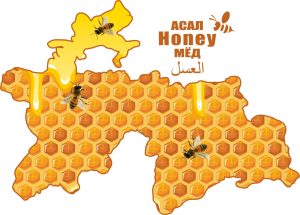
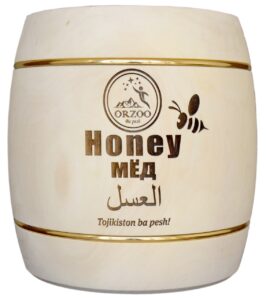 500 g.
500 g.  1 kg.
1 kg.  3 kg.
3 kg.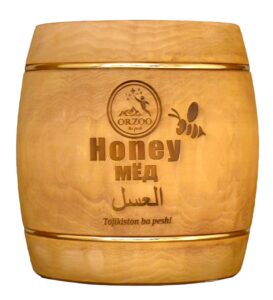 500 g.
500 g.  1 kg.
1 kg.  3 kg.
3 kg.

 500 г.
500 г.  1 кг.
1 кг.  3 кг.
3 кг. 500 г.
500 г.  1 кг.
1 кг.  3 кг.
3 кг.
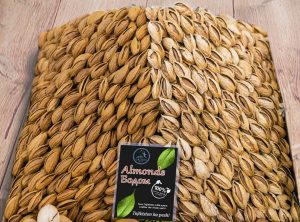
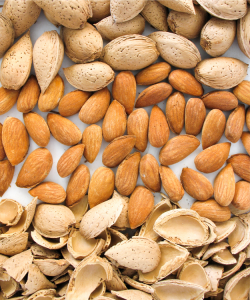 Almond is a light-loving and drought-tolerant tree, it grows in the western part of the Hisar mountain range, the basin of the Varzob river, the branches of the Darvaz mountain range, the basin of Surkhob and Yakhsu villages (at an altitude of 800-1600m above sea level). Also, its high-yielding and high-quality varieties are grown in Khatlon region, including in Qabadian district, etc. Various types of it are also widespread in Afghanistan, Iran, and Asia Minor countries. In the Republic of Tajikistan, there are mainly 3 types of it -almond,Steamed almondsand sweet almonds grow.
Almond is a light-loving and drought-tolerant tree, it grows in the western part of the Hisar mountain range, the basin of the Varzob river, the branches of the Darvaz mountain range, the basin of Surkhob and Yakhsu villages (at an altitude of 800-1600m above sea level). Also, its high-yielding and high-quality varieties are grown in Khatlon region, including in Qabadian district, etc. Various types of it are also widespread in Afghanistan, Iran, and Asia Minor countries. In the Republic of Tajikistan, there are mainly 3 types of it -almond,Steamed almondsand sweet almonds grow.
Local varieties of almonds, including Pistabodom, Kajakbodom, Azimboybodom, Qagotakbodom, Arakbodom, Sangbodom, Shaftolubodom, etc. are grown in Tajikistan. Also, many types of almonds, including “Desertny”, “Languedoc”, “Yaltinsky”, “Drake”, “Nonparel”, “Dershukufaki Nikiti” have been adapted to the climatic conditions of Tajikistan.
Almonds can also be grown from seeds. Its seeds are sprouted seeds of almonds, and sweet almonds are grafted onto them. Apricot, peach, cherry and plum seedlings are used as grafts. For the construction of almond orchards, fertile and rocky soils and sunny slopes of the foothills are suitable. Almond seedlings are planted in the order of 6×6, 6×5. The soil between the seedlings is plowed to a depth of 25 cm in autumn and spring, fertilized and watered 2-3 times. An almond tree bears fruit after 2-3 years (it lives 60-100 years). Due to its early flowering, that is, in February and March, its flowers are often frostbitten. Its fruit ripens in July and August. In Tajikistan, it is possible to harvest up to 7.8-25.0 centners per hectare of almonds.
Almond kernels are widely used in the food industry, medicine, perfumery, and textile industry, and they are also used to make sugar, cakes, cookies, oil, and almond water. Almonds can be eaten sprinkled with salt or sugar until they become soft, which is very beneficial for health.
Almond kernel is very medicinal, which is mentioned in many books of the past doctors, including in “The Law of Medicine” by Abu’ali Ibn Sina, “Makhzanu-l-adwiyya” by Muhammad Hossein ibn Muhammad Aqili, “Zahira Khorazmshahi” by Ismail Jurjani was informed. Folk healers consider nuts, oil, leaves and blossoms of sweet almond as medicine. Consuming 0.5-2.0 spoons of almond oil is very useful for treating constipation, constipation, chronic cough and respiratory diseases (bronchitis). Doctors treat jaundice with sweet almond kernels, and for this purpose, it is recommended to consume 5 almonds (2-3 times) on the first day; in the following days, its amount increases by 5 pieces, and after 4-5 days, it reaches about 70 pieces. Then, the amount of brain consumption is reduced in the same way, bringing it to 15 units, thus ending the treatment. It is useful to apply almond oil in the ear twice a day to treat earache. Applying almond oil also makes the skin very soft and smooth. “Almond milk” is made from crushed almond kernels, which is used in baking. Ointment of wet almond leaves is beneficial for acne scars, pimples, and inflamed skin. If almonds are heated until they smell, then the core is removed and eaten, it strengthens the stomach, prevents diarrhea, relieves indigestion and increases semen. If 17.5 g of almond kernels are crushed and eaten kneaded with honey, it cures liver pain and cough. Eat the almond shell with the skin, it strengthens the teeth; if they consume its flower, it will make men move. Crushed and eaten fresh leaves of sweet almond, it cleans the inside and removes stomach worms. If you boil bitter almond root in water and drink that water, it cleanses the spleen and kidneys of harmful substances. Crushed and soaked in vinegar or wine, it cures old and runny hair, wet sores, skin rashes, scabies, itching, and skin allergies.
In modern medicine, almond oil is used as a remedy for constipation. It is added to the composition of various liniments, ointments, creams, because the aqueous substance of almond pulp reduces the secretion of gastric juice, and is very useful for the treatment of stomach ulcers and duodenal ulcers.

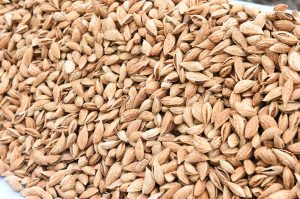
Миндаль – светолюбивое и засухоустойчивое дерево, произрастает в западной части Гиссарского хребта, бассейне реки Варзоб, отрогах Дарвазского хребта, бассейне сел Сурхоб и Яхсу (на высоте 800-1600 м над уровнем моря). Также его высокоурожайные и качественные сорта выращивают в Хатлонской области, в том числе в Кабадинском районе и др. Различные его виды также широко распространены в Афганистане, Иране, странах Малой Азии. В Республике Таджикистан в основном встречается 3 его вида -миндаль,Миндаль на паруи растет сладкий миндаль.
В Таджикистане выращивают местные виды миндаля, в том числе Пистабодом, Каджакбодом, Азимбойбодом, Каготакбодом, Аракбодом, Сангбодом, Шафтолубодом и др. Также к климатическим условиям Таджикистана адаптированы многие сорта миндаля, в том числе «Пустынный», «Лангедокский», «Ялтинский», «Селезень», «Нонпарель», «Дершукуфаки Никити».
Миндаль также можно вырастить из семян. Его семена – это проросшие семена миндаля, а на них привит сладкий миндаль. В качестве прививки используют саженцы абрикоса, персика, вишни и сливы. Для строительства миндальных садов подходят плодородные и каменистые почвы и солнечные склоны предгорий. Саженцы миндаля высаживают в порядке 6х6, 6х5. Почву между саженцами осенью и весной вспахивают на глубину 25 см, удобряют и поливают 2-3 раза. Миндальное дерево плодоносит через 2-3 года (живет 60-100 лет). Из-за раннего цветения, т. е. в феврале-марте, цветок часто подмерзает. Его плоды созревают в июле и августе. В Таджикистане можно собрать до 7,8-25,0 центнеров с гектара миндаля.
Ядра миндаля широко используются в пищевой, медицинской, парфюмерной и текстильной промышленности, а также из них изготавливают сахар, торты, печенье, масло и миндальную воду. Миндаль можно есть, посыпав солью или сахаром, пока он не станет мягким, что очень полезно для здоровья.
Ядра миндаля очень целебны, о чем упоминается во многих книгах врачей прошлого, в том числе в «Законе медицины» Абуали ибн Сины, «Махзану-л-адвийа» Мухаммада Хоссейна ибн Мухаммада Акили, «Захира Хорезмшахи». Об этом сообщил Исмаил Джурджани. Орехи, масло, листья и цветки сладкого миндаля народные целители считают лекарством. Употребление 0,5-2,0 ложки миндального масла очень полезно для лечения запоров, запоров, хронического кашля и респираторных заболеваний (бронхит). Врачи лечат желтуху ядрами сладкого миндаля, для чего в первый день рекомендуется съедать 5 миндальных орехов (2-3 раза); в последующие дни его количество увеличивается на 5 штук, а через 4-5 дней достигает примерно 70 штук. Затем таким же образом уменьшают количество потребления мозга, доводя его до 15 единиц, тем самым заканчивая лечение. Полезно применять миндальное масло в ухе два раза в день для лечения боли в ухе. Применение миндального масла также делает кожу очень мягкой и гладкой. «Миндальное молоко» производится из измельченных ядер миндаля, которое используется в выпечке. Мазь из влажных листьев миндаля полезна при шрамах от угревой сыпи, прыщах и воспаленной коже. Если миндаль нагреть до запаха, то сердцевину вынуть и съесть, это укрепляет желудок, предотвращает диарею, облегчает несварение и увеличивает количество спермы. Если 17,5 г ядер миндаля измельчить и съесть, разминая с медом, это излечит боль в печени и кашель. Скорлупу миндаля ешьте вместе с кожурой, она укрепляет зубы; если они съедят его цветок, это заставит людей двигаться. Измельченные и съеденные свежие листья сладкого миндаля очищают внутренности и выводят желудочных глистов. Если вскипятить корень горького миндаля в воде и выпить эту воду, она очистит селезенку и почки от вредных веществ. Измельченный и вымоченный в уксусе или вине, он лечит старые и жидкие волосы, мокрые язвы, кожную сыпь, чесотку, зуд и кожную аллергию.
В современной медицине миндальное масло используется как средство от запоров. Его добавляют в состав различных мазей, мазей, кремов, так как водное вещество мякоти миндаля снижает секрецию желудочного сока, и очень полезно для лечения язвы желудка и двенадцатиперстной кишки.
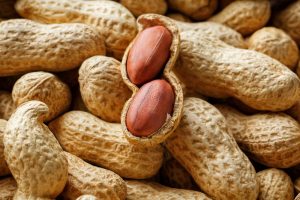
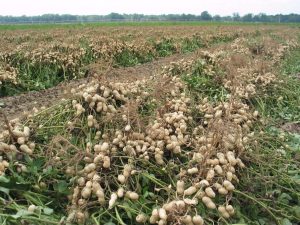 Одной из сельскохозяйственных культур, обладающих наибольшим потенциалом в агробизнесе Таджикистана, является арахис. В Таджикистане арахис может выращиваться предпринимателями для продажи в качестве сырья, а также использоваться для переработки, хранения и производства различных продуктов в их бизнесе. В 1903 году американский ученый Джордж Карвер работал над производством различных продуктов из арахиса и выделил более 300 продуктов, которые предприниматель мог производить и получать хороший доход. Другими словами, в Таджикистане арахис – один из самых жизнеспособных продуктов для бизнеса.
Одной из сельскохозяйственных культур, обладающих наибольшим потенциалом в агробизнесе Таджикистана, является арахис. В Таджикистане арахис может выращиваться предпринимателями для продажи в качестве сырья, а также использоваться для переработки, хранения и производства различных продуктов в их бизнесе. В 1903 году американский ученый Джордж Карвер работал над производством различных продуктов из арахиса и выделил более 300 продуктов, которые предприниматель мог производить и получать хороший доход. Другими словами, в Таджикистане арахис – один из самых жизнеспособных продуктов для бизнеса.
С каждого гектара арахиса можно получить от 1500 до 2000 кг урожая.
Арахис — ценная масличная культура. Среди других масличных он отличается высокой масличностью семян и качеством масла. В семенах содержится до 50-60% высококачественного пищевого, невысыхающего масла и 35% белка.
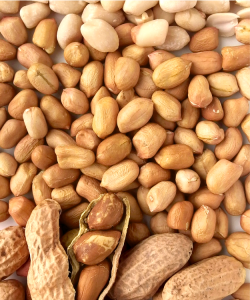
Из семян арахиса можно изготовить около 60 видов кондитерских изделий. Арахисовое масло по качеству не уступает оливковому, применяется в пищу, а также в консервной, маргариновой, мыловаренной промышленности и в медицине. Жмых арахиса богат белком (40-45%), содержит 7-8% жира и используется для изготовления консервов, халвы, печенья, шоколада, кофе, тортов и других кондитерских изделий.
А исследования, проведенные учеными в американском штате Айова, показали, что люди, в чьем рационе хотя бы 4 раза в 7 дней появляется земляной орех, на 37 процентов меньше подвергаются риску ишемии. А каждая дополнительная порция продукта, по мнению ученых, еще на 8,3% снижает эту опасность. И все это – благодаря химическому составу продукта, в который входят магний, никотиновая кислота, медь, олеиновая кислота, антиоксиданты. Вместе они создают мощную защиту для сердца, сосудов и других органов.
Аарахис снижает риск формирования желчных камней почти в 4 раза. Этот эффект ученые объясняют весьма просто. Желчные камни – это по своей сути холестерин в чистом виде. Арахис снижает уровень холестерина. Следовательно, нет ничего странного, что земляной орех защищает от образования желчных камней.
На протяжении 10 лет Тайванские ученые исследовали взаимосвязь между земляными орехами и риском возникновения злокачественных образований в толстой кишке. В эксперименте принимали участие по 12000 мужчин и женщин. Результат приятно удивил ученый мир. Оказалось, достаточно съедать хотя бы 2 порции арахиса в неделю, чтобы уменьшить риск рака кишечника у женщин почти на 58 % и на 27 % у мужчин. А это уже неоспоримая польза для организма.


One of the crops with the greatest potential in agribusiness in Tajikistan is peanuts. In Tajikistan, peanuts can be grown by entrepreneurs for sale as a raw material, as well as used for processing, storage and production of various products in their business. In 1903, American scientist George Carver worked on the production of various peanut products and identified over 300 products that an entrepreneur could produce and earn a good income. In other words, in Tajikistan, peanuts are one of the most viable products for business.
 From each hectare of peanuts, you can get from 1500 to 2000 kg of crop.
From each hectare of peanuts, you can get from 1500 to 2000 kg of crop.
Peanuts are a valuable oilseed crop. Among other oilseeds, it is distinguished by high oil content of seeds and quality of oil. The seeds contain up to 50-60% high-quality edible, non-drying oil and 35% protein.
About 60 types of confectionery can be made from peanut seeds. Peanut oil is not inferior in quality to olive oil, it is used in food, as well as in the canning, margarine, soap industry and in medicine. Peanut cake is rich in protein (40-45%), contains 7-8% fat and is used for the manufacture of canned food, halva, cookies, chocolate, coffee, cakes and other confectionery.
The studies conducted by scientists in the US state of Iowa showed that people in whose diet at least 4 times in 7 days a peanut appears are 37 percent less at risk of ischemia. In addition, each additional serving of the product, according to scientists, reduces this danger by another 8.3%. Moreover, all this is due to the chemical composition of the product, which includes magnesium, nicotinic acid, copper, oleic acid, and antioxidants. Together they create powerful protection for the heart, blood vessels and other organs.
Peanuts reduce the risk of gallstone formation by almost 4 times. Scientists explain this effect quite simply. Gallstones are essentially pure cholesterol. Peanuts lower cholesterol levels. Therefore, it is not surprising that the peanut protects against the formation of gallstones.
For 10 years, scientists in Taiwan have been investigating the relationship between peanuts and the risk of colon cancer. The experiment involved 12,000 men and women. The result pleasantly surprised the scientific world. It turned out to be enough to eat at least 2 servings of peanuts per week to reduce the risk of bowel cancer in women by almost 58% and by 27% in men. In addition, this is an undeniable benefit for the body.

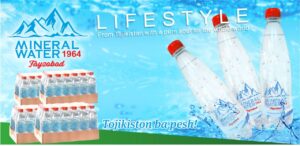 Another life-giving product from “ORZOO” brand is natural mineral water “Obi Fayzobod”, which pleases lovers of environmentally friendly products in 0.5 liters plastic bottles!
Another life-giving product from “ORZOO” brand is natural mineral water “Obi Fayzobod”, which pleases lovers of environmentally friendly products in 0.5 liters plastic bottles!
Natural mineral water “Obi Fayzobod” from “ORZOO” brand is a natural crystal clear spring water, which is directly extracted from a well at a depth of 1324 m. The well is located in an ecologically clean area covered with green trees and meadows of Fayzobod district of Tajikistan.
What is special about Obi Fayzobod mineral water from ORZOO brand?
An ideal pH level of 8-8.5 and the ratio of magnesium and calcium 1:4: restores the acid-base balance;
Improving metabolism and cleansing the body of toxins;
Gentle mineralization up to 250 mg/litre: suitable for daily use;
Unique composition: supplies the body with essential trace elements.
We strive to bring water the way nature created it: useful, alive and real.
Having passed a depth of 1324 meters, “Obi Fayzobod” water retains all its useful properties and mineral composition.
We extract and bottle Obi Fayzobod water from one original source; therefore, we guarantee 100% quality and natural taste of every sip from a bottle with ORZOO brand.
Feel the power of nature in every bottle of “ORZOO”!
 Мы стремимся донести воду такой, какой создала ее природа: полезной, живой и настоящей.
Мы стремимся донести воду такой, какой создала ее природа: полезной, живой и настоящей.
Пройдя глубину в 1324 метров, вода «Оби Файзобод» сохраняет все свои полезные свойства и минеральный состав.
Мы добываем и разливаем воду «Оби Файзобод» из одного оригинального источника, поэтому гарантируем 100%-ное качество и натуральный вкус каждого глотка, который будет сделан из бутылки с брендом “ORZOO”.
Почувствуй силу природы в каждой бутылке “ORZOO”!
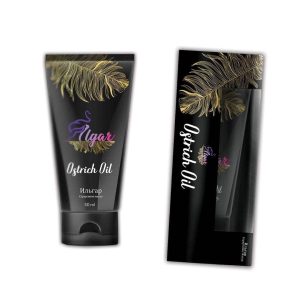
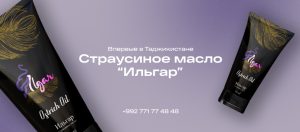
Впервые в Таджикистане предоставляем Вашему вниманию страусиное масло «Ильгар» от бренда Орзу. Страусиное масло высокоэффективный натуральный продукт, обладающий уникальными терапевтическими свойствами. Страусиное масло оказывает мощное противовоспалительное действие, обладает выраженными болеутоляющим, ранозаживляющим, восстанавливающим, противоотёчным свойством. Данное масло имеет широкий спектр полезных свойств, и активно используют при изготовлении лекарственных и косметических средств.
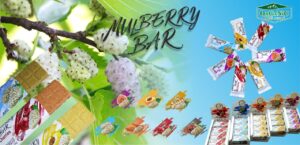

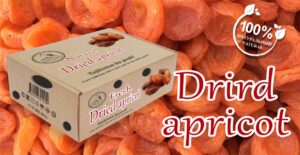
Dried apricots for Tajikistan is a national product, it is a brand, for the production of which the whole infrastructure is sharpened. 10% of world production is located in this country. This is a product, the sale of which brings Tajikistan up to 130-180 million dollars a year, up to 70% of rural residents live off dried apricots. And every apricot tree in Tajikistan is accounted for and their felling is strictly controlled by a special body!
In the dryer under the scorching sun, apricots turn into dried apricots. After drying, the seeds are removed from the fruits, oil can be squeezed out of them and added to jam. Then the future dried fruits are formed, from here they go to the markets.
Dried apricots are considered the healthiest of all dried fruits. There are no less vitamins in it than in fresh apricots. In winter, it is simply irreplaceable and everyone willingly feasts on it.
Dried apricots occupies a leading position among products that contain a large amount of potassium, so this product is recommended for use in cases of diseases associated with the heart muscle, as well as for people who have suffered heart attacks. Dried apricots also contain vitamins A, B1, B2, C, PP, it is rich in minerals: potassium, calcium, magnesium, iron, phosphorus and sodium. Fiber helps stabilize the digestive tract, prevents constipation. Dried apricots also help the body remove toxins and cleanse the liver.
It should be noted that Tajik dried apricots are prepared without the use of chemicals, and dried only in the sun.






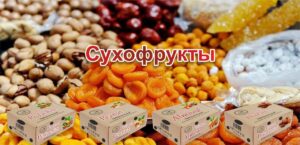
Курага для Таджикистана — это национальный продукт, это бренд, под производство, которого заточена целая инфраструктура. 10% мирового производства находится именно в этой стране. Это продукт, продажа которого приносит Таджикистану до 130-180 миллионов долларов в год, до 70% сельских жителей живут за счет кураги. А каждое абрикосовое дерево в Таджикистане учтено и вырубка их строго контролируется специальным органом.!
В сушильне под палящим солнцем абрикосы превращаются в курагу. После сушки из плодов извлекают косточки, из них можно выжимать масло и добавлять в варенье. Затем формируют будущие сухофрукты, отсюда они отправляются на рынки.
Курага считается самой полезной из всех сухофруктов. Витаминов в ней не меньше, чем в свежем абрикосе. Зимой она просто незаменима и все охотно лакомятся им.
Курага занимает лидирующие места среди продуктов, которые содержат большое количество калия, поэтому этот продукт рекомендован к употреблению в случаях заболеваний, связанных с сердечной мышцей, а также людям, перенесшим сердечные приступы. В кураге также содержатся витамины А, В1, В2, С, РР, она богата минеральными веществами: калием, кальцием, магнием, железом, фосфором и натрием. Клетчатка способствует стабилизации деятельности ЖКТ, предотвращает запоры. Курага также помогает организму выводить шлаки и токсины, очищает печень.
Стоит отметить, что таджикская курага готовится без применения химикатов, а сушится только на солнце.







Raisins – dried fruits of grapes – the most common type of dried fruits in our country. Despite the outward simplicity of its manufacture, the technology for the production of high-quality raisins is actually quite complex and requires strict adherence to a number of conditions.
First of all, good raisins can only be obtained from grape varieties with thin skins and fleshy flesh, and the sugar content should be at least 20% (by the way, in ready-made raisins, the sugar content reaches 80%). It is possible to achieve such characteristics of grape berries only in a hot sunny climate, therefore one of the world leaders in the production of this dried fruit is Tajikistan, where the technologies for proper drying and further processing of raisins have been brought to perfection. In Tajikistan, raisins are processed in a special way, in which 80% of natural sugars are preserved. It is worth noting that dried fruits contain more nutrients than natural grapes.
Raisins are a unique product, because they retain the maximum useful properties of fresh grapes – 70-80% of vitamins and 100% of trace elements. It is believed that the darker the raisins, the healthier they are. Light brown raisins from Tajikistan are a real find for the food industry. In addition to being ideal on its own (as a snack or even dessert), raisins perfectly complement and enrich the taste of any confectionery (sweets, bars, chocolate), instant foods (snacks, muesli, crunches), drinks, dairy products ( yoghurts, puddings, ice cream, sour milk drinks), meat dishes.
Despite their small size, raisins have a high-energy value and contain vitamins, minerals and fiber important for health. Numerous studies confirm the benefits of raisins for our body. Its regular use allows you to strengthen the heart and blood vessels, improve athletic performance and slow down aging. Due to the high content of B vitamins, raisins are valued for their ability to strengthen the nervous system and improve sleep. It can be used as a sedative that relieves stress and fatigue.





Виноград – это один из самых давних и родных фруктов таджикского народа. Согласно исследованию международной организации виноградарства, страны расположенные в поясе 40 °- 50 ° северной широты являются наиболее благоприятными для выращивания винограда. Наряду с Турцией, Италией и другими странами Таджикистан расположен в этой ширине на политической карте (см. карту).
По данным Министерства сельского хозяйства, площадь виноградников в Таджикистане составляет около 38 тысяч гектаров (в 2016 году) и ежегодно собирают в среднем 500 000 тонн винограда.
Известно таджикским фермерам более 50 видов винограда и самыми лучшими сортами с точки зрения доходности считаются такие сорта как: Дамские пальчики (Хусайни), Кишмиш, Тайфи розовый, Зарифи, Регари и Бычий глаз. По данным отраслевых министерств и ведомств, виноград выращивают в 45 городах и районах Таджикистана, что равняется 75% от общего количества районов страны. Города и районы Турсунзаде, Гиссар, Шахринав, Дангара, Истаравшан, Бободжон Гафуров являются ведущими в области выращивания винограда. Таджикский виноград это сладкий и богатый витаминами фрукт с содержанием сахара до 25%.
В среднем половина получаемого урожая экспортируется за границу в такие страны как Афганистан, Пакистан, Китай, Казахстан и Россия.
Даже при том, что в Таджикистане производится более пол миллиона тонн винограда в год, данный объём всё равно реализуется успешно.
Насладитесь ароматной сладкой мякотью таджикского винограда от бренда «ORZOO».

Grapes are one of the most ancient and native fruits of the Tajik people. According to a study by the international organization of viticulture, countries located in the 40 ° – 50 ° north latitude zone are the most favorable for growing grapes. Along with Turkey, Italy and other countries, Tajikistan is located in this width on the political map (see map).
According to the Ministry of Agriculture, the area of vineyards in Tajikistan is about 38 thousand hectares (in 2016) and an average of 500,000 tons of grapes are harvested annually.
Tajik farmers know more than 50 types of grapes, and the best varieties in terms of profitability are considered to be such varieties as: Lady’s fingers (Hussaini), Kishmish, Taifi pink, Zarifi, Regari and Bull’s eye. According to sectoral ministries and departments, grapes are grown in 45 cities and regions of Tajikistan, which is equal to 75% of the total number of regions in the country. The cities and districts of Tursunzade, Gissar, Shahrinav, Dangara, Istaravshan, Bobojon Gafurov are leading in the field of growing grapes. Tajik grapes are a sweet and vitamin-rich fruit with a sugar content of up to 25%.
On average, half of the crop is exported abroad to countries such as Afghanistan, Pakistan, China, Kazakhstan and Russia.
Even though more than half a million tons of grapes are produced in Tajikistan per year, this volume is still being successfully implemented.
Enjoy the fragrant sweet pulp of Tajik grapes from the ORZOO brand.

Персиковые деревья известны уже довольно давно, их плоды любимы многими. Растения отличаются от многих других фруктовых культур теплолюбивостью, и одним из таких теплых стран является Таджикистан.
Наша страна имеет наиболее подходящий климат, и выращивать персики тут не составляет труда. Нет нужды проявлять особый уход, когда деревья прекрасно развиваются и дают стабильные урожаи. Ввиду отличных вкусовых качеств плодов, персики активно экспортируются в разные страны, и территория их произрастания существенно расширилась, хотя условия стали менее комфортными, что вынудило людей уделять значительно больше времени каждому этапу развития растения.
Только в дехканском хозяйстве “Узун” района Джалолиддини Балхи насчитывается свыше 300 гектаров персиковых садов, где выращивается свыше 13 сортов этих фруктов. Ежедневно из сельхозугодий экспортируется от 3 до 4 тонн фруктов. Фрукты собирают, начиная с мая и заканчивают сбор в сентябре. Один сорт созревает следом за другим без остановки, дехкане не остаются без дела.
С началом сезона сбора урожая персиков крестьяне Кумсангирского района отправляют на рынки Таджикистана 80 тонн свежих фруктов.
Плоды персика, выращенные в нашем регионе, очень полезный продукт в рационе питания. Мякоть плодов персика очень сочная, ароматная, освежающая, питательная, легко усваивается. Персик рекомендуют детям, а также ослабленным после болезни лицам для улучшения аппетита. Употребление плодов персика полезно при наличии у человека сердечно-сосудистых, почечных заболеваний, болезней печени и желчного пузыря. Железо, витамин К и ликопин в составе хорошо влияют на сердечно-сосудистую систему, персики приносят пользу при аритмии и анемии. Стимулируют работу пищеварительного тракта и перистальтики, избавляя от изжоги и запоров.
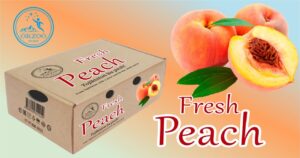
Peach trees have been known for quite a long time; many people love their fruits. Plants differ from many other fruit crops in their thermophilicity, and one of such warm countries is Tajikistan.
Our country has the most suitable climate, and it is not difficult to grow peaches here. There is no need to take special care when the trees are developing well and producing stable yields. Due to the excellent taste of the fruit, peaches are actively exported to different countries, and the territory of their growth has expanded significantly, although the conditions have become less comfortable, which forced people to devote much more time to each stage of plant development.
Only in the dekhkan farm “Uzun” of Jaloliddini Balkhi district there are over 300 hectares of peach orchards, where over 13 varieties of these fruits are grown. From 3 to 4 tons of fruits are exported daily from farmland. Peach is harvested from May and ends in September. One variety ripens after another without stopping, and dekhkans do not remain idle.
With the beginning of the peach harvest season, the peasants of the Kumsangir region send 80 tons of fresh fruit to the markets of Tajikistan.
Peach fruits grown in our region are a very useful product in the diet. Peach fruit pulp is very juicy, fragrant, refreshing, nutritious, and easy to digest. Peach is recommended for children, as well as persons weakened after illness in order to improve their appetite. The peach fruits is useful for person with cardiovascular, kidney diseases, diseases of the liver and gallbladder. Iron, vitamin K and lycopene in the composition have a good effect on the cardiovascular system, peaches are beneficial for arrhythmia and anemia. Stimulate the work of the digestive tract and peristalsis, relieving heartburn and constipation.

In mid-March, unripe fruit appears on sale in the markets in Tajikistan. This is a gura- green apricot. So unripe that even the bone inside has not formed. This fruit is eaten completely with bones. The inhabitants of Central Asia and Caucasus appreciate this fruit. Apricot is sold in three types: green apricot, ripe apricot and dried apricots.
In Tajikistan, apricots ripen in May. One of the main benefits of apricot is its beneficial effect on increasing hemoglobin in the blood, preventing thyroid and cardiovascular diseases, and improving heart functioning.
In addition, the fruit lowers cholesterol levels and prevents the formation of cholesterol plaques on the vascular walls, removes toxins from the body.
If you want to increase brain activity, then, in this case, the researchers advise consuming apricots. Apricots improve memory that is why they are recommended to people who are engaged in intellectual work.
Apricot is a godsend for all those who are losing weight; this dietary fruit perfectly unloads the body and serves as a sweet snack, while following a diet. The calorie content of apricot is 41 kcal per 100 grams.
In Tajikistan, the fruits ripen first in the south of Tajikistan. Tajik apricots have already appeared on the shelves of foreign countries. The apricot-picking season in the republic lasts almost until the end of summer. Apricots are grown in the north of the republic, here, or rather in Isfara city, even a monument was erected to the “Sunny fruit”. Isfara has tens of thousands of hectares of apricot orchards alone! In the garden of each resident, there are necessarily several apricot trees).
In recent years, apricot orchards have been expanded in Tajikistan; farmers are harvesting a bountiful harvest using best practices. It is necessary to study the experience of farmers in cities and districts of the Sughd region, especially in the field of horticulture and apricot production.
According to statistics, there are 160,000 hectares of apricot orchards in Tajikistan, 56,000 hectares of which are at the disposal of dekhkan farms. There are 46,000 hectares of apricot orchards in Sughd region, 5,000 hectares in Khatlon region, 2,000 hectares in DRS and 500 hectares in GBAO. The annual fruit production in the country is 423,000 tons.
In order to increase the competitiveness of small and medium-sized agricultural enterprises of Tajikistan in the export markets, the International Trade Center, in cooperation with the relevant structures of the country, developed and implemented the project of “Promoting access to the export markets of agricultural products of the Republic of Tajikistan through an improved food security system”.

В середине марта в продаже на рынках в Таджикистане появляется еще неспелый фрукт. Это гура, то есть зеленый абрикос. Недозрелый настолько, что даже косточка внутри не сформировалась. Такой плод едят целиком. Ценят такой плод жители Центральной Азии и Кавказа. Абрикос продается в трёх видах: зеленый абрикос, спелый абрикос и курага.
В Таджикистане абрикосы созревают в мае месяце. Одним из основных полезностей абрикоса является его благоприятное влияние на повышение гемоглобина в крови, профилактика болезней щитовидной железы и сердечно-сосудистых заболеваний, улучшает работу сердца.
К тому же, фрукт снижает уровень холестерина и предотвращает образование холестериновых бляшек на сосудистых стенках, выводит из организма токсины.
Если хотите повысить мозговую активность, то, в и этом случае, исследователи советуют потреблять абрикосы. Абрикосы улучшают память, именно поэтому их рекомендуют людям, которые занимаются интеллектуальной работой.
Абрикос находка для всех худеющих, ведь он диетический фрукт, который отлично разгружает организм и служит сладким перекусом, при соблюдении диеты. Калорийность абрикоса составляет 41 ккал на 100 грамм.
В Таджикистане первыми созревают плоды на юге Таджикистана. Таджикские абрикосы уже появились на прилавках зарубежных стран. Сезон сбора абрикосов в республике продолжается почти до конца лета. В основном, абрикосы выращивают на севере республики, здесь, а точнее в городе Исфара «солнечному фрукту» установили даже памятник. В Исфаре расположены десятки тысяч гектаров только абрикосовых садов! В огороде каждого жителя -обязательно есть несколько абрикосовых деревьев).
В последние годы в Таджикистане расширены абрикосовые сады, земледельцы собирают обильный урожай, используя передовой опыт. Необходимо изучать опыт земледельцев городов и районов Согдийской области, особенно в области садоводства и производства абрикосов.
Согласно статистике, в Таджикистане имеются 160 тысяч гектаров абрикосовых садов, 56 тысяч гектаров из них находятся в распоряжении дехканских хозяйств. В Согдийской области 46 тысяч гектаров абрикосовых садов, в Хатлонской области — 5 тысяч гектаров, в РРП — 2 тысячи гектаров и в ГБАО — 500 гектаров. Годовое производство фруктов в стране составляет 423 тысячи тонн.
В целях повышения конкурентоспособности малых и средних сельскохозяйственных предприятий Таджикистана на экспортных рынках Международным торговым центром в сотрудничестве с соответствующими структурами страны был разработан и реализован проект «Содействие доступу на экспортные рынки сельскохозяйственной продукции Республики Таджикистан через усовершенствованную систему продовольственной безопасности».
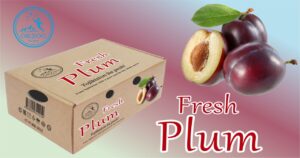 Natural plum from Tajikistan is not processed with sulfur, oil, syrup and other preservatives. Differs in excellent aroma and sweet pulp.
Natural plum from Tajikistan is not processed with sulfur, oil, syrup and other preservatives. Differs in excellent aroma and sweet pulp.
Plum is a rich source of antioxidants, such as anthocyanins, ascorbic acid, carotenoids, vitamin E. All these substances are involved in the fight against free radicals, which accelerate aging and provoke many diseases, such as Alzheimer’s and Parkinson’s. Scientists have been able to establish a link between adding plums to the daily diet and improving memory.
A study has shown that eating plums on a regular basis improves bone mineral density and bone biomarkers. Scientists attribute this effect to the antioxidants contained in the fruit, which reduce oxidative stress and increase the level of hormones that are responsible for the formation of bone mass. Vitamin K in plums plays a key role in the metabolism of calcium, the main mineral found in bones and teeth.
Due to the fiber and a large amount of water in its composition, the plum well removes cholesterol and salt deposits from the body, helps to improve the functioning of the digestive tract, and prevents indigestion, including constipation. Since the fruit is considered low in calories, it can be included in balanced diets for weight loss. After all, fiber-rich foods, according to scientists, reduce the production of hormones that cause hunger.
 Натуральная слива из Таджикистана, которая не обрабатывается серой, маслом, сиропом и другими консервантами. Отличается превосходным ароматом и сладкой мякотью.
Натуральная слива из Таджикистана, которая не обрабатывается серой, маслом, сиропом и другими консервантами. Отличается превосходным ароматом и сладкой мякотью.
Слива — богатый источник антиоксидантов, например антоцианов, аскорбиновой кислоты, каротиноидов, витамина Е. Все эти вещества участвуют в борьбе со свободными радикалами, которые ускоряют старение и провоцируют многие болезни, например Альцгеймера и Паркинсона. Ученым удалось установить связь между добавлением в ежедневный рацион слив и улучшением памяти.
Исследование показало, что употребление слив на регулярной основе улучшает минеральную плотность и биомаркеры костей. Ученые приписывают этот эффект содержащимся в составе фрукта антиоксидантам, которые снижают оксидативный стресс и повышают уровень гормонов, которые отвечают за формирование костной массы . Витамин К в составе слив играет ключевую роль в метаболизме кальция — основного минерала, содержащегося в костях и зубах.
Благодаря клетчатке и большому количеству воды в своем составе слива хорошо выводит из организма холестерин и солевые отложения, помогает наладить работу ЖКТ, предотвращает расстройства желудка, в том числе запоры. Поскольку фрукт считается низкокалорийным, его можно вводить в сбалансированные диеты для снижения веса. Ведь богатые клетчаткой продукты, по данным ученых, уменьшают выработку гормонов, которые вызывают чувство голода.
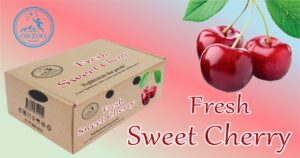
Таджикистан на весь мир славится фруктами и ягодами, черешня не исключение. +30 и солнце – погода, которую любит черешня. Массовый сезон уборки и экспорта черешни из Таджикистана обычно начинается приблизительно к 10 мая и длится примерно до середины июня. Урожай бывает настолько богатой, что от тяжести фруктов ветки склоняются к земле.
Алые, светло-красные и почти черные ягоды. В больших садах выращивают сорта с разным сроком созревания, так урожай можно собирать на протяжении всего сезона.
Первый урожай сразу же экспортируется. К экспорту ягоду готовят прямо на поле. Упаковщики бережно помещают каждую ягоду в коробки по два килограмма. И уже через неделю таджикская черешня поступит на прилавки зарубежных стран.
В Шахринавском районе сады черешни разбиты на площади более 500 гектаров. По словам фермеров, в этом саду более 700 деревьев черешни сорта Наполеон. Тут также знамениты такие сорта как «Валовая» и «Негритянка». Они отличаются хорошим товарным видом и высокой урожайностью. С одного дерева можно собрать до 30 килограммов плодов.
Спелые ягоды нельзя долго держать на солнце. На жаре они переспеют и лопнут. Поэтому на сбор выходят не только дехкане, но и сборщики по найму.
Кроме того, эти фрукты выращиваются и на приусадебных участках, и для многих людей являются одним из источников пополнения семейного бюджета.
В силу того, что агротехнические правила соблюдаются правильно и деревья своевременно обрабатываются необходимыми препаратами, удаётся вырастить хороший урожай данного вида фрукта.
Во всем Таджикистане, по информации Минсельхоза, площадь косточковых плодовых садов превышает 80 тысяч гектаров.

Very ripe and very tasty cherry! She grew up in the mountains of Tajikistan, where she was collected and carefully dried in a completely natural way.
Cherries are an excellent source of vitamin C and folic acid, especially in winter, when the body needs vitamins and solar energy so much.
Studies show that cherries are also a dietary source of melatonin, a natural hormone used by the body to achieve deep and restful sleep. Various environmental factors and diseases can reduce its levels and interrupt healthy sleep. Therefore, the consumption of cherries, according to experts, can provide insomniacs with a restful night’s rest.
It is especially pleasant that the use of vitamins in their natural form (from fruits and natural dried fruits) cannot lead to an overdose, unlike synthetic or concentrated vitamins from a pharmacy! You can eat (or drink compote) cherries as much as you want – and your body will take vitamins and minerals as much as it needs to fully absorb!
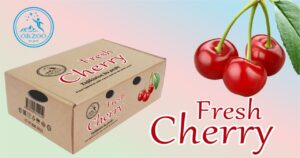 Very ripe and very tasty cherry! She grew up in the mountains of Tajikistan, where she was collected and carefully dried in a completely natural way.
Very ripe and very tasty cherry! She grew up in the mountains of Tajikistan, where she was collected and carefully dried in a completely natural way.
Cherries are an excellent source of vitamin C and folic acid, especially in winter, when the body needs vitamins and solar energy so much.
Studies show that cherries are also a dietary source of melatonin, a natural hormone used by the body to achieve deep and restful sleep. Various environmental factors and diseases can reduce its levels and interrupt healthy sleep. Therefore, the consumption of cherries, according to experts, can provide insomniacs with a restful night’s rest.
It is especially pleasant that the use of vitamins in their natural form (from fruits and natural dried fruits) cannot lead to an overdose, unlike synthetic or concentrated vitamins from a pharmacy! You can eat (or drink compote) cherries as much as you want – and your body will take vitamins and minerals as much as it needs to fully absorb!

Очень спелая и очень вкусная вишня! Выросла в горах Таджикистана, где её собрали и бережно высушили полностью естественным способом.
Вишня – это прекрасный источник витамина C и фолиевой кислоты, особенно в зимний период, когда организму так нужна подпитка витаминами и энергия солнца.
Исследования показывают, что вишня, кроме того, является пищевым источником мелатонина – природного гормона, используемого организмом для достижения глубокого и спокойного сна. Различные факторы окружающей среды и болезни могут снижать его уровень и прерывать здоровый сон. Поэтому потребление вишни, по мнению специалистов, может обеспечить страдающим бессонницей спокойный ночной отдых.
Особенно приятно то, что употребление витаминов в натуральном виде (из фруктов и натуральных сухофруктов) не может привести к передозировке, в отличие от синтетических или концентрированных витаминов из аптеки! Вы можете съесть (или выпить компота) вишни столько, сколько вам захочется – а ваш организм возьмёт витаминов и микроэлементов столько, сколько ему нужно полноценно усвоить!